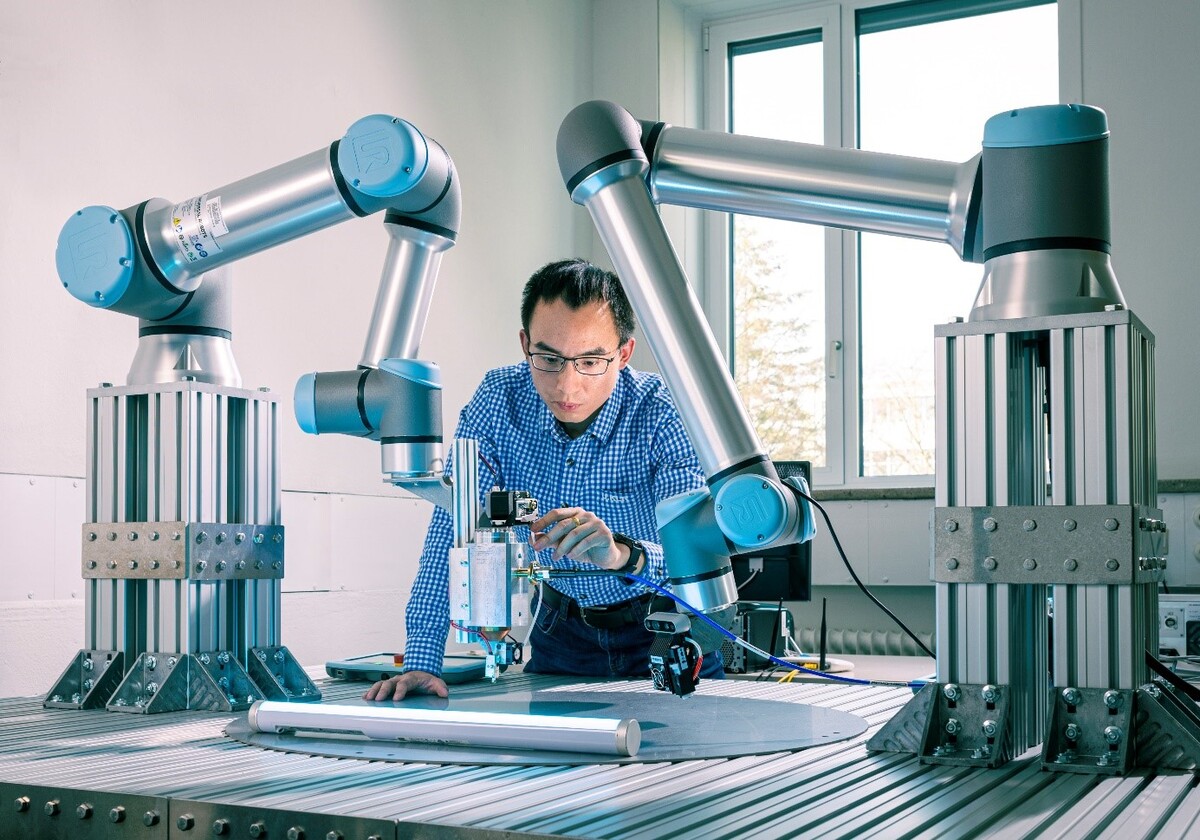3D-Druck
Many industrial sectors, such as the automotive and aviation industries, rely on fiber-reinforced composites as a high-tech material. Using additive manufacturing (or known as 3D printing) techniques and their freedom of design, a plastic matrix with glass or carbon fiber reinforcement are used to create lightweight components with high strength.
There are a number of additive manufacturing methods for three-dimensional plastic parts, such as fused deposition modeling, stereolithography or selective laser sintering, some of which also allow printing with short fibers. However, the known 3D printing processes in terms of continuous reinforcements are very limited regarding filament diameter, fiber volume content and printing speed due to the bottlenecks of the heating source and printing control technologies.
Based on electromagnetic heating, an alternative 3D printing technology that can process large amount of continuous fiber reinforced thermoplastic composites (CFRTP) with high-speed has been developed. This succeeds with a newly developed resonant coaxial microwave applicator as printing head. Here, a pre-impregnated filament - a string-shaped polymer that encloses the continuous fibers - is fed into a coaxial resonator where it also functions as the inner conductor of the resonator. As the fiber reinforced filament moves through the resonator, it is heated over the entire volume cross-section by microwave radiation. This allows uniform and rapid heating of even large diameter filaments. The developed path planning system can generate optimized and continuous printing path, which is transferred to the control system of the printer. Finally, the heated filament is pressed out and fused layer-by-layer or a free-standing lattice structure is printed directly in three-dimensional space.

